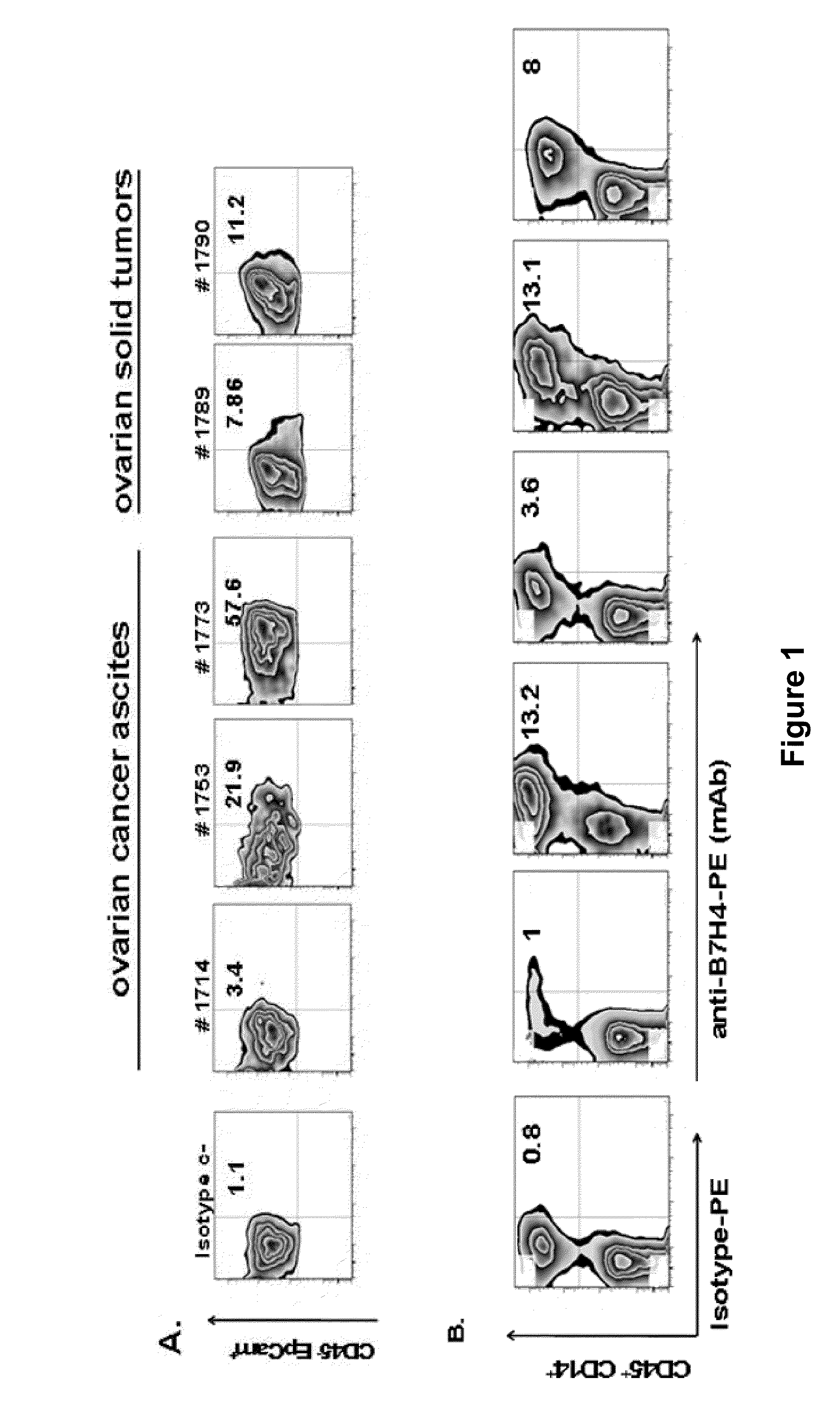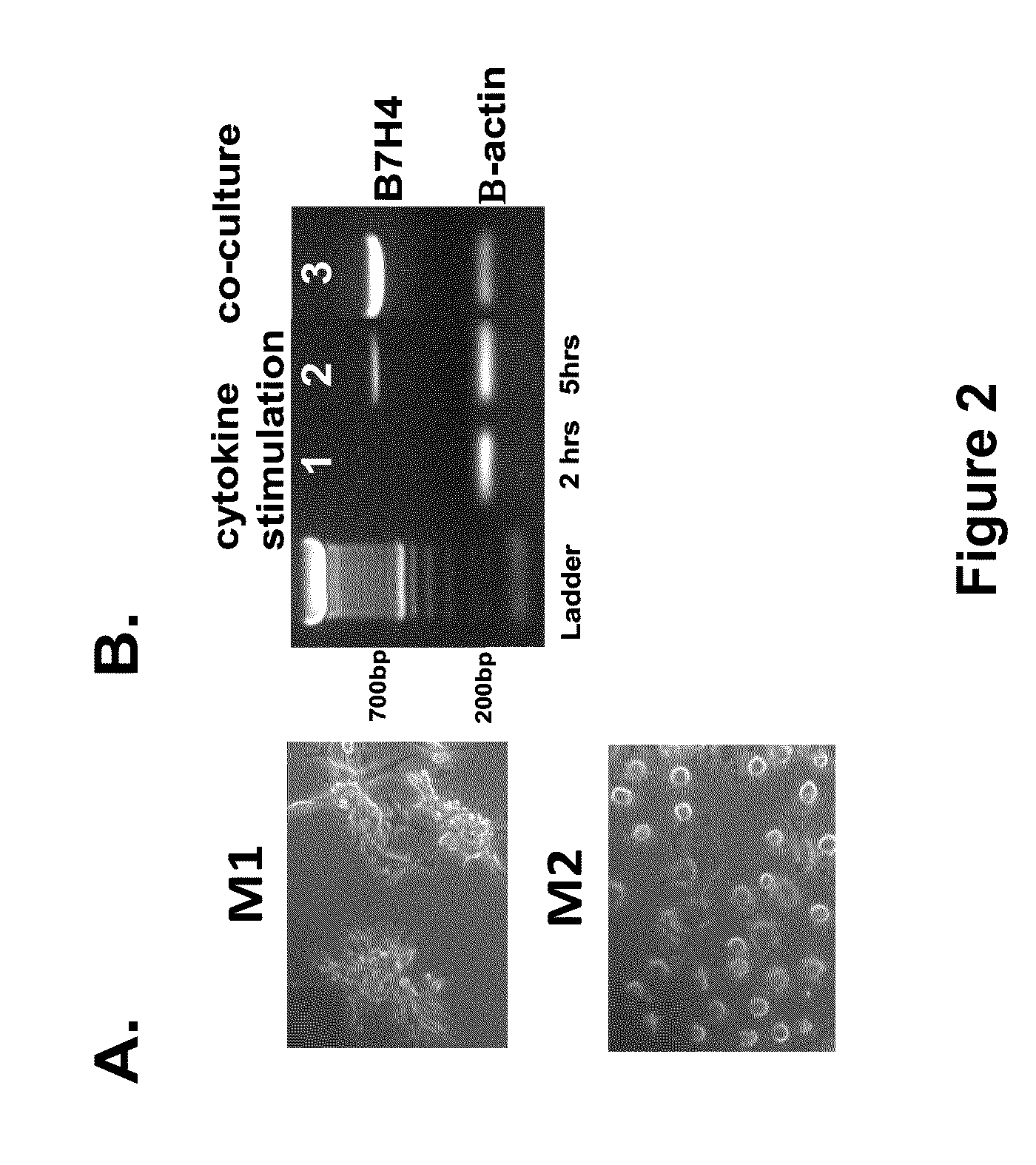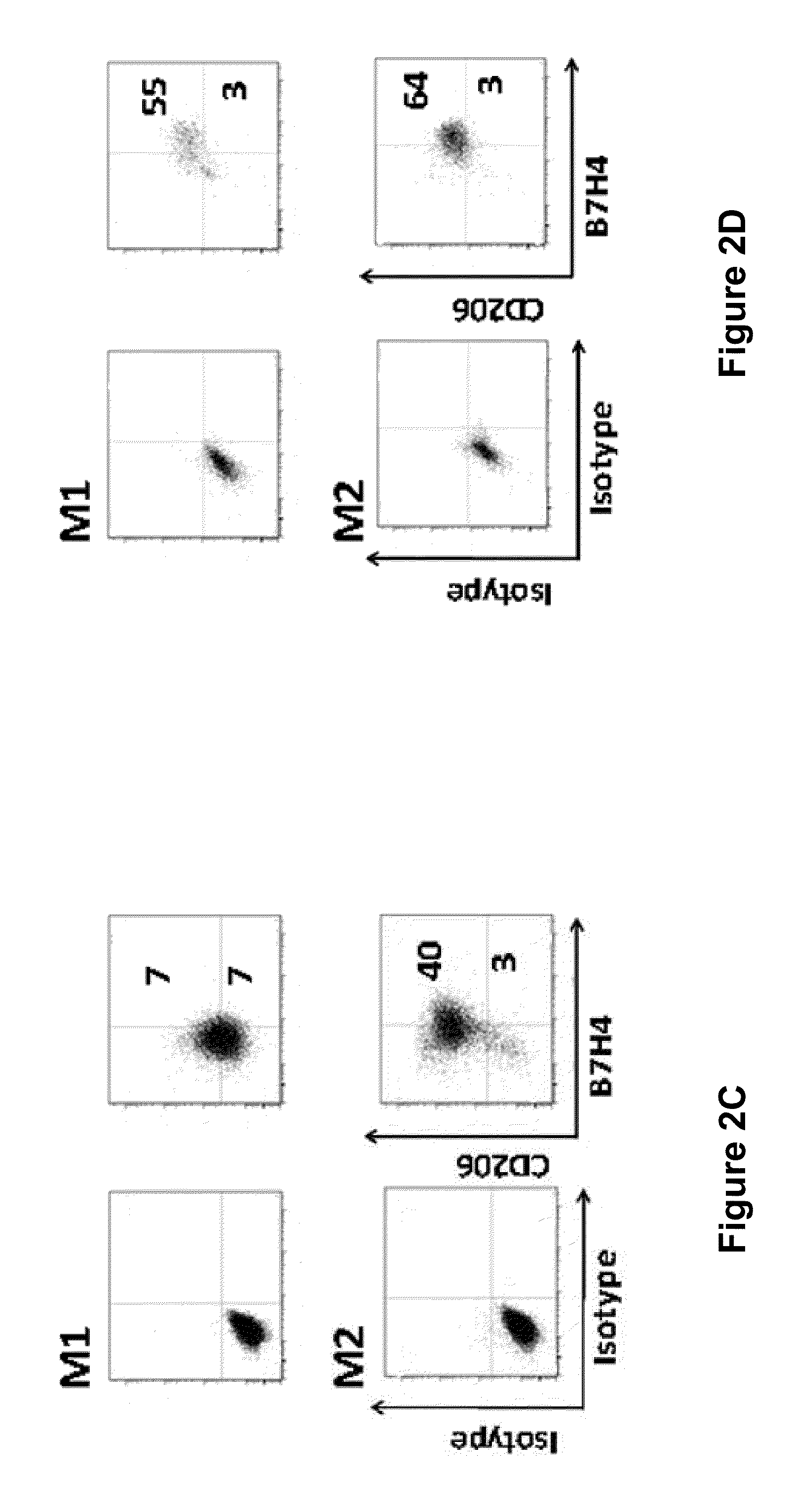Isolated b7-h4 specific compositions and methods of use thereof
- Summary
- Abstract
- Description
- Claims
- Application Information
AI Technical Summary
Benefits of technology
Problems solved by technology
Method used
Image
Examples
experimental examples
[0232]The invention is further described in detail by reference to the following experimental examples. These examples are provided for purposes of illustration only, and are not intended to be limiting unless otherwise specified. Thus, the invention should in no way be construed as being limited to the following examples, but rather, should be construed to encompass any and all variations which become evident as a result of the teaching provided herein.
[0233]Without further description, it is believed that one of ordinary skill in the art can, using the preceding description and the following illustrative examples, make and utilize the compounds of the present invention and practice the claimed methods. The following working examples therefore, specifically point out the preferred embodiments of the present invention, and are not to be construed as limiting in any way the remainder of the disclosure.
example 1
Anti-B7-H4 Antibodies
[0234]The following experiments were designed to isolate and characterize antibodies that bind to B7-H4. These antibodies are optimal for development for diagnostic and in vivo therapeutic applications.
[0235]The materials and methods employed in these experiments are now described.
[0236]Antibodies
[0237]Yeast-display scFv expression was detected with anti-cmyc mouse monoclonal antibody (mAb), 9E10 and Alexa-488 F(ab′)2 fragment of goat anti-mouse IgG (H+L) (488 anti-IgG) or PE-Cy7 goat F(ab′)2 anti-mouse IgG(H+L) (PE-Cu5 anti-IgG). Biotinylated antigen binding to yeast display scFv was detected with goat anti-biotin-FITC or streptavidin-PE. ScFv binding to cell lines was detected with APC-conjugated anti-V5 mouse mAb and scFv binding to plastic-immobilized antigen was detected by HRP-conjugated mouse anti-V5 mAb. Biobody binding to B7-H4-expresser cells was detected with APC-labeled streptavidin.
[0238]Identification of Anti-B7-H4 scFv
[0239]The yeast-display scFv ...
example 2
Novel Human Anti-B7-H4 Recombinant Antibodies Overcome B7-H4-Mediated T-Cell Inhibition and Potentiate T Cell Anti-Tumor Responses
[0260]B7-H4 (B7x / B7s), one of the most recently identified members of B7 superfamily, serves as an inhibitory modulator of T-cell responses. B7-H4 is expressed by various human cancers and B7-H4 expression by macrophages has been significantly correlated with advanced stages of ovarian cancer and with high numbers of tumor-infiltrating T regulatory cells. B7-H4 expressed at the surface of tumor-associated macrophages (TAMs) or surrogate APCs negatively regulates T cell activation, possibly through interaction with a putative ligand, and B7-H4 blocking by antisense oligonucleotides inhibited tumor-associated macrophages suppression and enabled anti-tumor T cells in vitro and in vivo. However, to this date, B7-H4 cell surface expression has been poorly understood.
[0261]The following experiments were designed to study cell surface expression of B7-H4 in samp...
PUM
| Property | Measurement | Unit |
|---|---|---|
| Immunogenicity | aaaaa | aaaaa |
Abstract
Description
Claims
Application Information
 Login to View More
Login to View More - Generate Ideas
- Intellectual Property
- Life Sciences
- Materials
- Tech Scout
- Unparalleled Data Quality
- Higher Quality Content
- 60% Fewer Hallucinations
Browse by: Latest US Patents, China's latest patents, Technical Efficacy Thesaurus, Application Domain, Technology Topic, Popular Technical Reports.
© 2025 PatSnap. All rights reserved.Legal|Privacy policy|Modern Slavery Act Transparency Statement|Sitemap|About US| Contact US: help@patsnap.com



